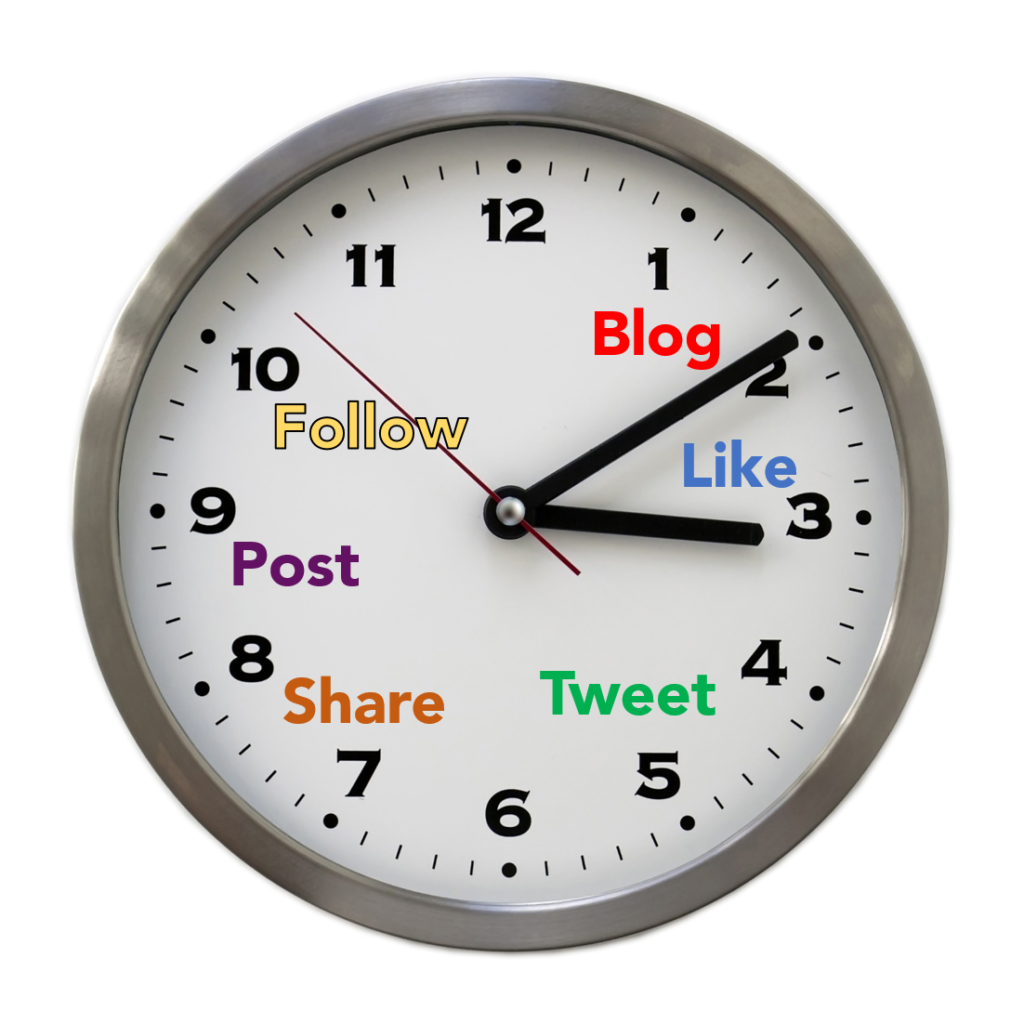
Yesterday’s blog post – “How Are Your Social Content Ratings?” – had the desired effect. It stimulated considerable thought in radio circles – and not just among programmers and content creators. These Nielsen metrics for television are powerful, and now they’re providing a pecking order of social media prowess and power among on-screen personalities.
It’s a good thing because the usual numbers used by station management and advertisers have always fallen short. Knowing how many are watching pales in comparison with their engagement levels. And when you retweeting, liking, following, and sharing tidbits about a favorite TV star, you’re paying attention.
And after all, that’s the key component that drives behavior. In our over-saturated media landscape, figuring out how to capture the attention of consumers has become intensely more challenging.
Social media provides the tool kit that allows shows and personalities to crack through the noise and the fog. And used wisely, it can connect audiences (and marketers) with DJs, shows, and hosts like never before.
That is, if they’re inclined to use and master the social levers that are merely a click or tap away.
Lori Lewis is now VP/Social Media for Modern Luxury magazine. Up until now, she’s spent her entire career in broadcast radio. She sees the challenge of radio talent using social media in the most basic of terms:
“Like anything in life – when there is no purpose (and cadence) behind what we’re doing – it starts to become meaningless, and dismissed as a time-suck.
“So the first step is to define our purpose behind social, giving our time spent on these platforms some meaning. Our purpose must genuinely complement our core characteristics.
“What do we want people to remember about us?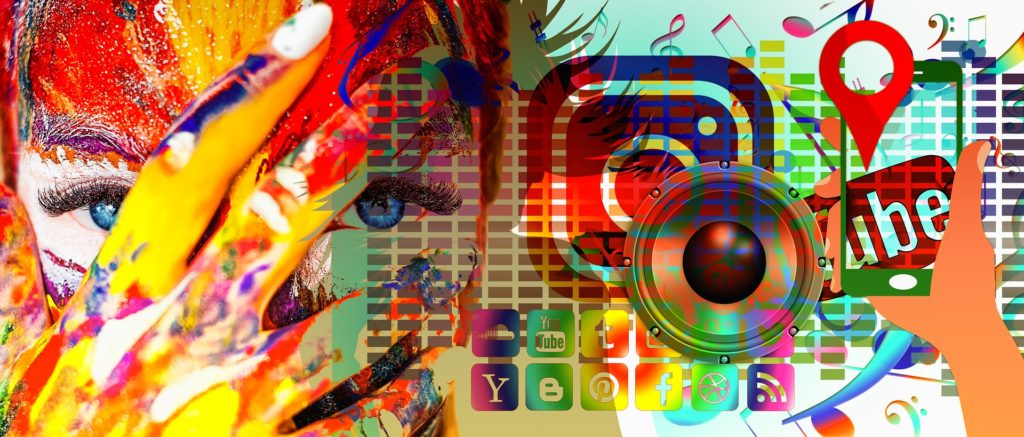
“Is it empathy? If so, then one part of social would be sharing personal moments to build empathy for your brand (and ultimately showing you have much empathy for the audience).
“Or is it humor? Kindness? Knowledge? Or is it community-driven?
“Social can have more than one purpose – but it must be defined.”
AQ, our study of on-air personalities conducted last spring – in partnership with Morning Show Boot Camp – suggests many air personalities lack that sense of purpose behind their social interactions.
People who do Lori’s job have a heavy lift. That’s because more than one-third of the 1,100+ radio stars who took our survey consider social media to be something of a time suck. And to add a little insult to social injury, those who work on morning shows are especially likely to feel connecting on Facebook, Twitter, Instagram, and other social platforms gets in the way of doing their jobs.
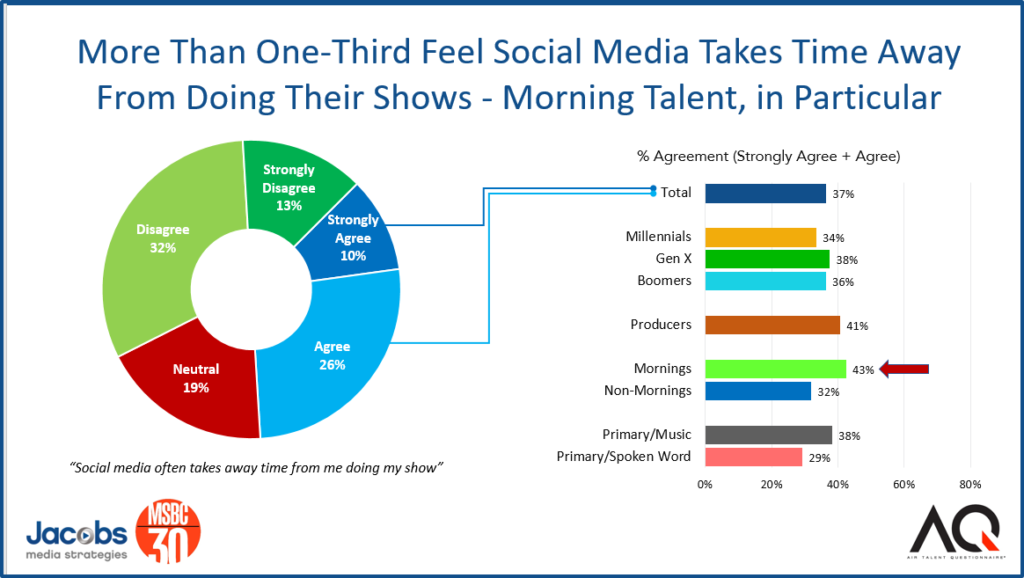 A look at the demographics shows that while older personalities are more likely to point to the burdens of executing a social strategy, even one-third of Millennial DJs are on the same page. And those who ply their craft on music stations are quite a bit more apt to question social’s value among their other in-studio duties.
A look at the demographics shows that while older personalities are more likely to point to the burdens of executing a social strategy, even one-third of Millennial DJs are on the same page. And those who ply their craft on music stations are quite a bit more apt to question social’s value among their other in-studio duties.
But interestingly, there’s a strong realization that social matters. In fact, we gave respondents a list of 13 skills, and asked them to designate the most important ones for achieving on-air success. The list included everything from computer prowess to writing to voicetracking to podcasting.
And sitting on top of the heap is social media skills, mentioned by two-thirds of our personality sample as “very important” to achieving career success.
When we followed up by asking these personalities to rate their own proficiency at these same skills, a startlingly low percentage told us their social media abilities are “excellent.”
The chart below shows these skills in order of importance. Note that only about one-third tell us their social media talents rate an “excellent” score. That’s an admission that most personalities could use some help.
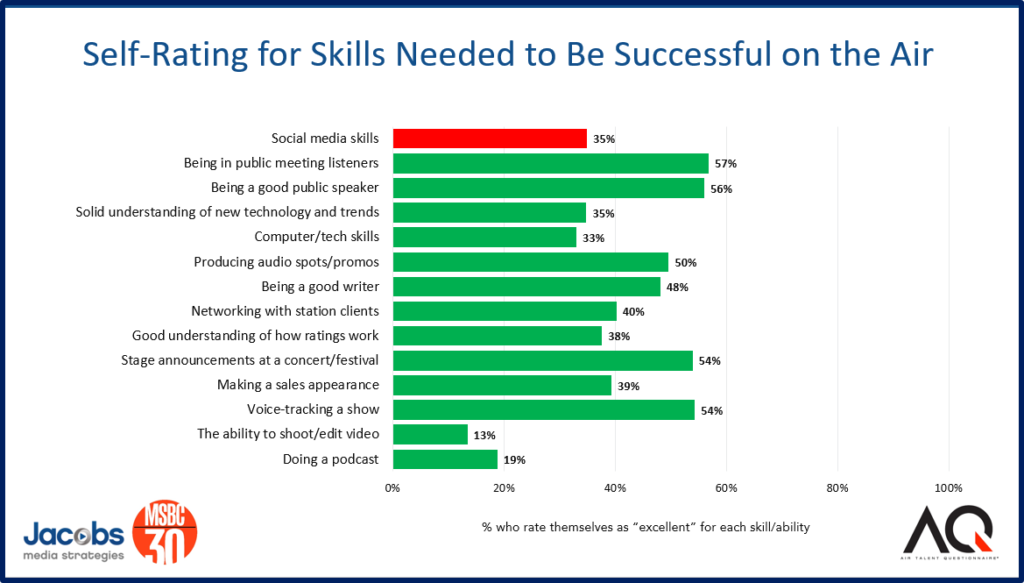 So maybe the data is trying to tell us something else. While it’s true many personalities view social as another of the many tasks they have to perform, even more acknowledge the importance of social skills and the reality they have a lot to learn.
So maybe the data is trying to tell us something else. While it’s true many personalities view social as another of the many tasks they have to perform, even more acknowledge the importance of social skills and the reality they have a lot to learn.
A handful of radio broadcasting companies have added staff and expertise in the social space, hiring people like Lori. But most do not recognize the value of teaching the ins and outs of social media to on-air personalities, as well as support staff.
As the Nielsen data and other research underscore, audience and advertiser engagement plays an increasingly more important role on media platforms.
But harnessing that power means more than posting viral memes or simply clicking “like” up and down a station’s feed. It’s more nuanced than that.
Lori offers a final thought, and it’s one that illustrates that social engagement can take many different forms:
“It’s been my long belief using social when you’re OFF the air is more meaningful. It feels more personal interacting with talent when they are “off 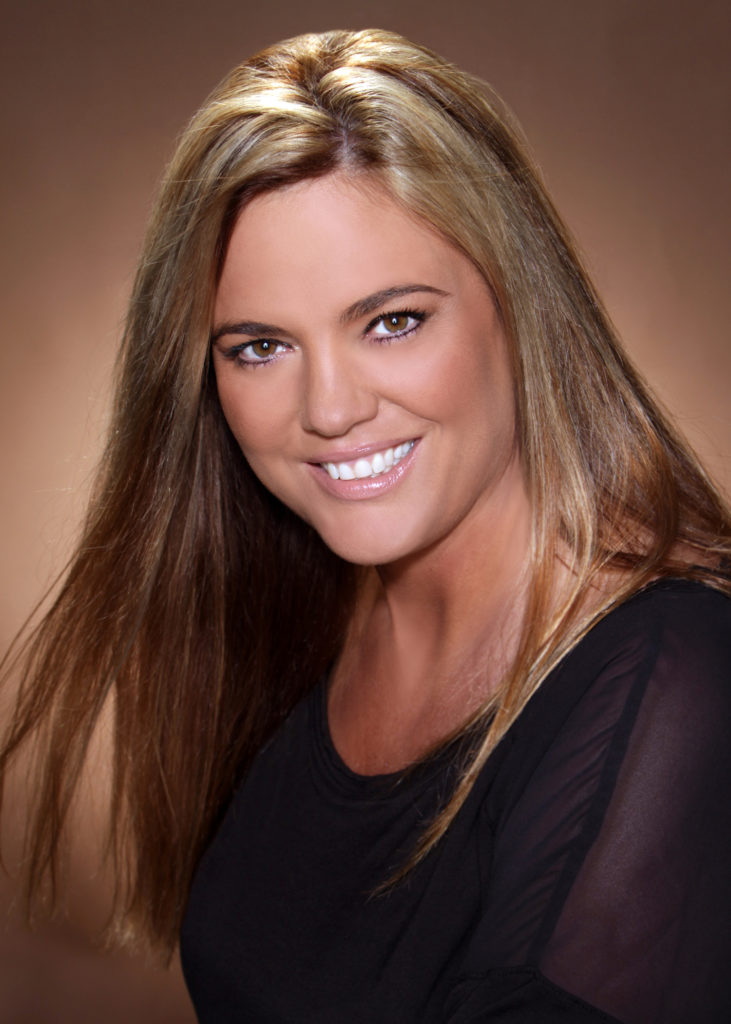
the clock.
“This doesn’t mean you don’t “like” tweets or comments that roll in during the show. The real time feel of a “like” by talent is very memorable.
“It does means using planned content while live on the air. It means to ‘like’ the unplanned, funny tweets or comments in real time. But the bulk of audience interaction (commenting back to them, conversations, etc.) would be better for our bandwidth if we carved out time after our shows.”
There’s a lot more to excelling in the social space than carving out a few minutes here or there to respond to an audience that lives on these platforms.
It’s not about how often you post or tweet or how many “likes” or “followers” you amass.
Social is the interaction engine that helps set broadcast radio apart from other media.
It’s time radio learned how to make it hum.
- What To Do If Your Radio Station Goes Through A Midlife Crisis - April 25, 2025
- A 2020 Lesson?It Could All Be Gone In A Flash - April 24, 2025
- How AI Can Give Radio Personalities More…PERSONALITY - April 23, 2025




Addressing this issue head on is so important. Too many people are winging social media – and winging it typically is why we fall short on communicating the impact social media has on our overall mission, and can make social feel meaningless.
The social coordinators here at Modern Luxury – we have about 55 publications – love the cadence I’ve set forth for them. They now have structure which they say gives them more bandwidth to be creative.
Purpose and cadence is key.
Social is so much more than blurting out what we’re thinking or eating – when there is meaning behind it, it becomes the second most powerful tool you have – next to your mic/transmitter. Thank you for including me on this, Fred.
Hi Lori — Does an active engaged audience *expect* immediate replies from air talent? I didn’t do the research you did, but folks freak out if their messages, texts and/or postings don’t receive an instant avalanche of comments from their ‘socials’.
Once upon a time, it was called “fan mail”, and listeners would happily wait days or weeks to get a letter or a photo from their deejay. But now, well . . .
I’m all for delaying social engagement until after the show is over — just as one wouldn’t (or shouldn’t) yell commentary at actors in the middle of a performance — but how does the audience feel about the wait? And does that delay affect their reactions to the host/show (“He’s an a**h***, he didn’t Tweet me back until 10:30!”)?
Looking forward to your findings,
Alan (Both a radio talent AND an actor)
It’s a great question, Alan. A real-time “like” of a tweet or comment is fun, the audience feels acknowledged – but an actual reply back or conversation can wait until off the air if your bandwidth is too depleted from being in the moment during the show.
So perhaps I should have been a bit more clear, “like” their stuff (if appropriate) in real time – try to have conversation/ or just comment back after the show.
But also – the bulk of social media content itself should mostly be crafted outside of the live show. We shouldn’t be trying to craft posts or tweets while doing a live show – plan the stuff out. The more planned we are – the more mind space we have to be in the moment with the unplanned stuff 🙂